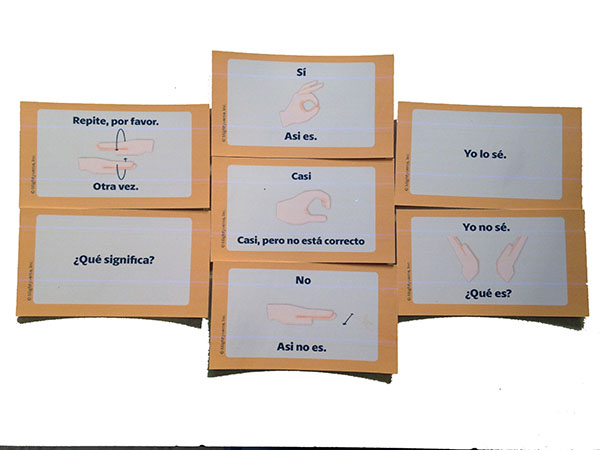One of the most exciting parts of learning a language is when you can actually
communicate with someone else in that language. When you first start learning it can
feel like a chicken-and-egg problem – you need to speak in order to learn to speak. Some
people spend years in language classes, before they feel like they have enough
vocabulary and grasp of the language to hold a conversation. However, time and again, we
hear stories of people who successful interact with people in their new language within
weeks (or even days!) of starting to learn.
Benny the Irish Polyglot suggests “You are always ready to speak a language, no matter
what level you are at” and has some great tips
for getting started.
The secret is to just dive in, and we’ve encoded some simple tricks in our ¡Dígame¡
language game that make that easier. You don’t have to even use our game to get
started.
We’ve identified 7 phrases that can help you get your meaning across when you have very
little vocabulary. You can practice with a language partner before you try with a
stranger. In the game, we use these to help players communicate. The neat thing about
these phrases, is that each has a corresponding gesture that usually works if you forget
the phrase. When you practice using these gestures and simple phrases, you get better at
making yourself understood and understanding others when you have very few words.

Understanding What You Heard
- Repite, por favor (please repeat) or Otra vez
(again / another time) This is essential when you ear is new to the language and you
want to hear something again. Rotating your hand in a circle will help your listener
understand what you mean even if you don’t quite pronoun the phrases
correctly, though English-speakers will have a fairly easy time remembering
“repite”
- ¿Qué significa? (what does that mean?) You can use the same gesture
as “Yo no sé” putting both hands palm up to invite someone to use
different words or gestures to explain what they just told you. If you repeat the
phrase or word that you don’t understand, then the other person can help you
distinguish between not hearing correctly or not understanding.
Clarifying Meaning
These are three essential clarification words and phrases. You can start with
“sí” and “no,” but if you can use the longer versions, it will
be a little less abrupt and will feel more like a conversation.
- Sí (yes) or Asi es (that’s it) — You
can use the ok sign forming a circle with your thumb and forefinger with your other
fingers spread upward. Thumbs up also works well.
- casi (almost) — this is really important, often you need to
get them to say more to explain when you know that it’s not quite no or yes
- No or Asi no es (that’s not it) — with
your hand palm down, move it back and forth. This gesture is more polite than the
thumbs down gesture, and will be understood by most Spanish speakers.
Getting it
It is important to be able affirm when you understand or that you still need help.
- Yo lo sé (I know it) or Entiendo (I understand)
— clapping your hands together with delight can be a rewarding affirmation for
your language partner who has helped you.
- Yo no sé. ¿Qué es? (I don’t know. What is it?) — not
strictly necessary if you know the other phrases, but some variety can really help
move the conversation along.
Go to the list of Mightyverse helper phrases for ¡Dígame! here:
https://www.mightyverse.com/en/phrase_lists/dgame-signal-phrases
